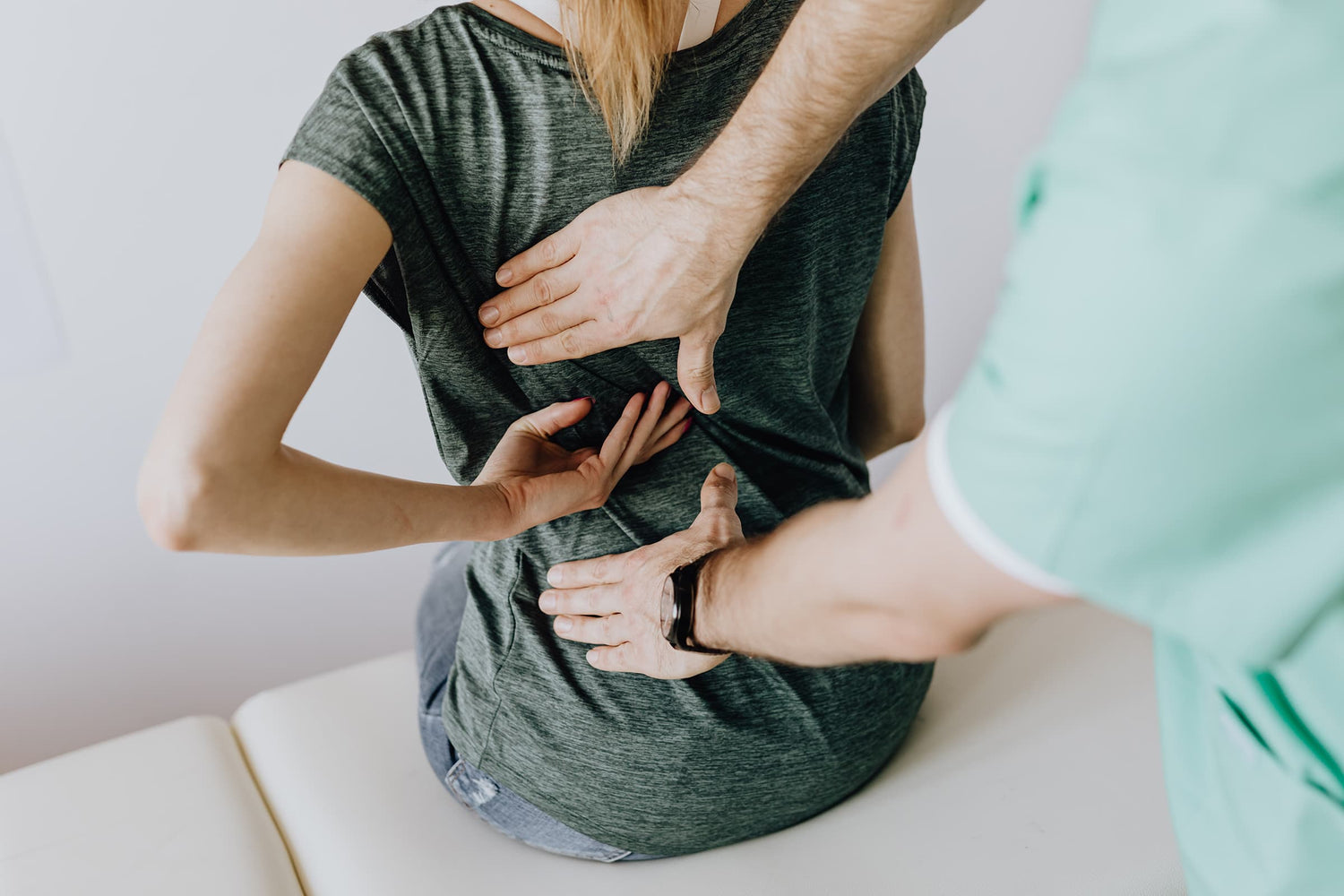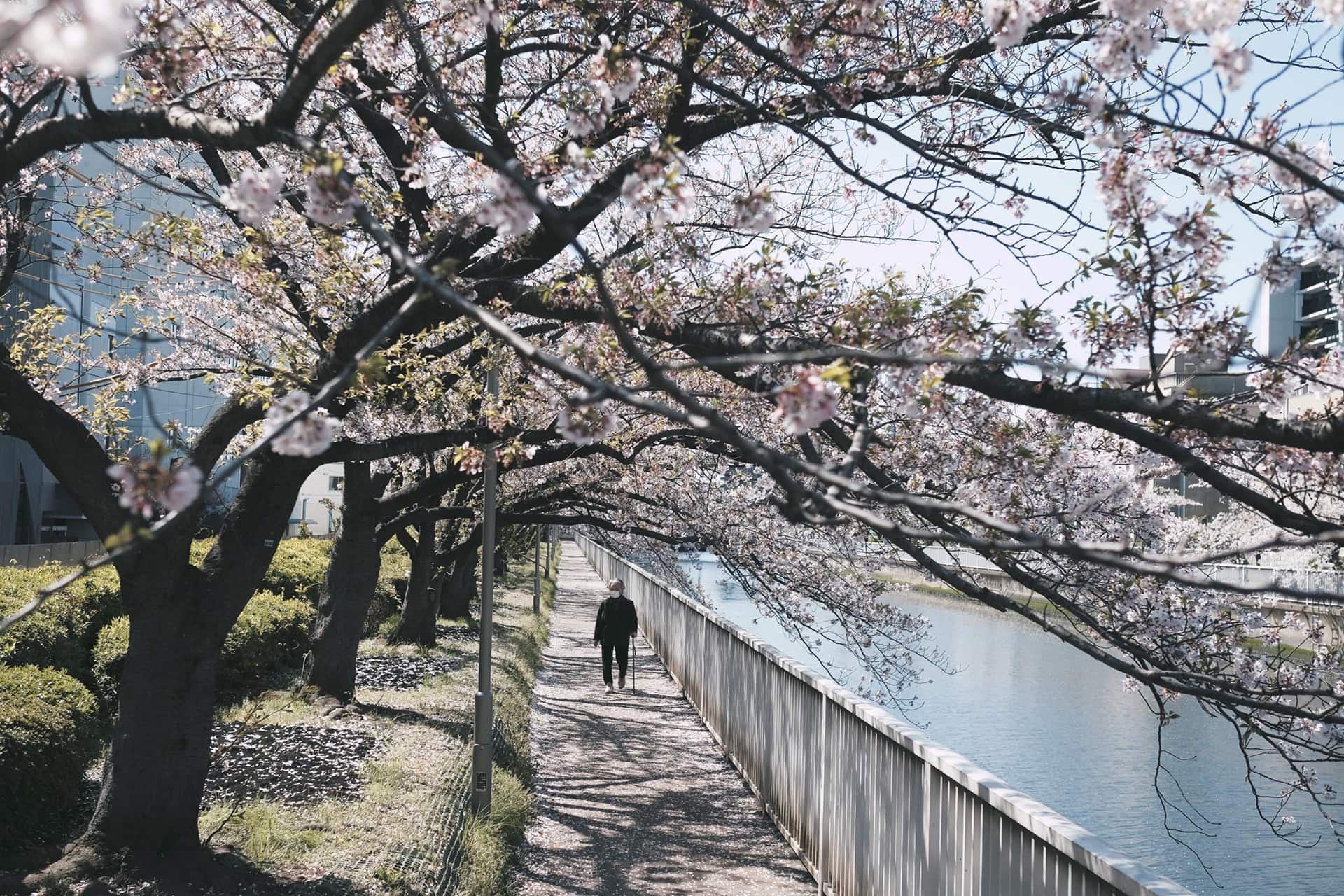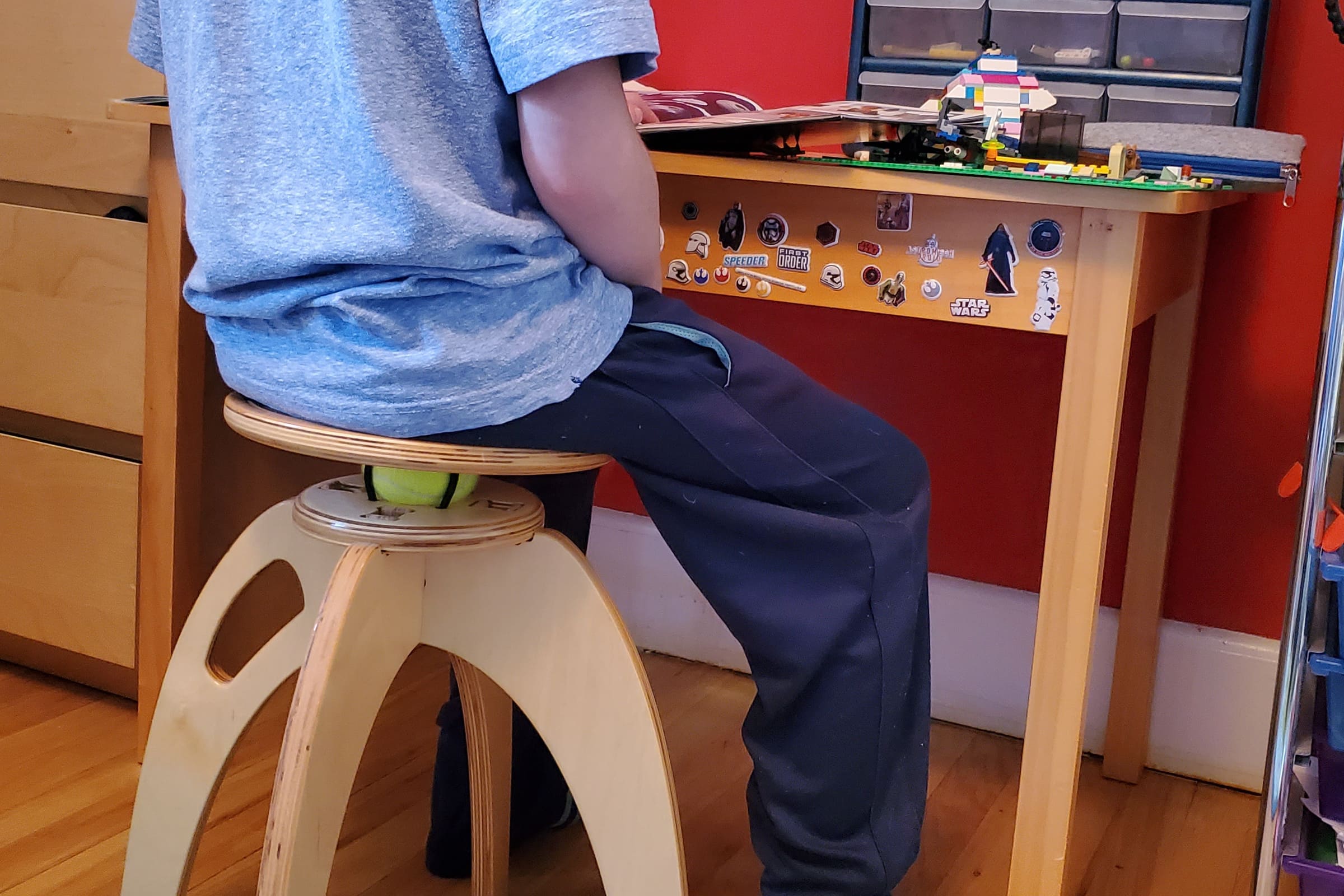Recently we received an email from a delightful young convert to active sitting, Haley Young. Her email began: “I just wanted to let you know that I LOVE the Ariel chair…”. As it happens, our Ariel gets fan mail all the time, so while this was a nice vote of confidence for active sitting, it wasn’t too out of the ordinary.
What caught my attention, however, was Haley’s next sentence: “I have scoliosis… I went from having to massage my back after work every day to having no pain at all…”. And she concludes: “If you ever need a testimonial, I’d gladly give one!” See her three minute video, here.
Scoliosis is an abnormal curving of the spine and is an ancient scourge. Hippocrates mentions scoliosis over 2000 years ago and named it using the Greek word for “bending”. The deformity is typically a “C” shape or an “S” shape and is surprisingly common; 3% of the population has some degree of scoliosis. Scoliosis has a very wide range of severity; often it doesn’t cause much mischief, but occasionally it can cause profound spinal deformity. In such cases it can restrict breathing and even compromise cardiac function.
Scoliosis is more common in women, and typically appears in adolescence. Depending on the severity and rate of progression it may be treated with “watchful waiting”, or wearing an external brace. When scoliosis is severe as a last resort it may be treated with extensive, dramatic, surgery that straightens the spine and holds it in place with ridged implanted metal rods. Here’s a set of before and after X-rays of such surgery:

The thing that makes scoliosis fascinating is that most often it is idiopathic. That is, we have little idea what is causing it. Studies of twins suggest that only 40% of scoliosis is accounted for by genetic factors, but we don’t yet know what genes are involved, and we have even less idea of what environmental factors might account for the other 60% of the cause of scoliosis. Concurrent conditions such as spina bifida and cerebral palsy are sometimes associated with scoliosis.
In the absence of a clear cause, it’s difficult to be sure what therapies might be helpful for patients with scoliosis. Adding to the confusion, sometimes scoliosis resolves without any therapy, so even when a therapy appears successful it’s impossible to be sure that it was actually helpful.
Given this uncertainty, it’s not surprising that a number of treatments have been championed. Scoliosis-specific exercise programs, electrostimulation of muscles, and a variety of other approaches are all in current use, and a host of other approaches are advocated on various scoliosis websites. One of the more interesting proposed treatments is hippotherapy, that is, horseback riding as a therapy. The idea is that horses move and sway as they walk, and thus require constant adjustment of the small and large muscles of the back to compensate and allow one to properly sit on the moving horse without falling off. This neuromuscular training allows the spine to find postures closer to normal over time. As an aside, active sitting requires similar constant postural realignment, but without the expense of buying oats and shoes for a horse.
The vast majority of people with scoliosis are adults with a stable spinal configuration. Many of these patients are troubled by discomfort or pain that is related to their scoliosis. An array of treatments is available for this problem, suggesting that no single approach works for everyone. Oral pain medicine (NSAIDs, such as ibuprofen) is perhaps the most common treatment, but a variety of exercises and stretches also have their advocates. Postural reeducation techniques, such as the Feldenkrais Method, are helpful to some people.
Which brings us back to Haley. As a physician, I’d have a lot more questions for Haley, because I’d want to be sure that her scoliosis is the source of her pain before trying to come up with a plan. But I’m not Haley’s doctor, and besides, after a number of false starts she’s found a solution that works for her: active sitting.
As the founder of a startup dedicated to making active sitting affordable, I’m of course delighted to hear Haley’s story. And it makes sense that the better posture and stronger core fostered by active sitting would be a help to Haley. The example of hippotherapy even suggests a neuromuscular mechanism by which active sitting might help. But I’m also disquieted, because I know how very much I want to believe that our chair has been a help to Haley. As the Nobel Prize winning quantum physicist Richard Feynman observed: “The first principle is that you must not fool yourself, and you are the easiest person to fool.”
So, as a researcher, I’d have to say Haley’s story is interesting, but the use of active sitting to help people with scoliosis will require a lot more investigation before it can graduate from being single case study to being an established fact. But this is just the scientific method in action: start with an observation, develop a hunch, and then try to disprove it. So, lots more work to be done.
But in the meantime, I’m personally delighted to hear Haley is feeling better, and that active sitting may have been the key.





Leave a comment
All comments are moderated before being published.
This site is protected by hCaptcha and the hCaptcha Privacy Policy and Terms of Service apply.